Abstract
Five maize (Zea mays L.) hybrids, FS854, B73 × Mo17, B84 × Mo17, B73 × B77, and P3382, grown under field conditions, were sampled at intervals during the grain-filling period. Plants were subdivided into stalks (including sheaths), leaves, and kernels. These parts were assayed for dry weight, reduced nitrogen, and extractable nonstructural carbohydrates. The duration and rates of net nitrate reduction and photosynthesis were approximated by the changes over time in the accumulation of reduced nitrogen and dry weight by the plant (total, above ground), respectively.
Data on the accumulation of reduced nitrogen and dry weight by the plant show that decreases in nitrate reduction preceded (in time and extent for four of the hybrids and in extent for FS854) decreases or cessation of photosynthesis. FS854 continued to accumulate reduced nitrogen and dry matter throughout the grain-filling period.
The patterns of change in stalk carbohydrate and reduced nitrogen during the early stages of ear development show the stalk serves as a storage reservoir and that these reserves were remobilized during the final stages of grain development. The marked increase and maintenance of dry weight and carbohydrate content of stalks until 34 days after anthesis, shows the capacity of the leaves to produce photosynthate through the first half of the grain-filling period exceeds the needs of the ear and/or the transport system. In contrast, stalk nitrogen content shows a slight increase up to 12 days after anthesis and decreases continually thereafter. Leaf nitrogen was lost continuously throughout grain development. The potential capacity of the plant to supply newly reduced nitrogen was inadequate to support initiation and early development of the kernels without remobilization of vegetative nitrogen. Of the two hybrids having delayed leaf senescence, FS854 with its initially higher concentration and content of reduced nitrogen in the stalk, initiated and developed a bigger ear than P3382, which had lower levels of stalk nitrogen.
Three of the five hybrids had `near linear' rates of accumulation of kernel dry weight, whereas none of the hybrids had linear rates of gain in kernel nitrogen. All hybrids had maximum or near maximum rates of gain of kernel nitrogen between 26 and 34 days after anthesis and a marked reduction (41-52%) of rates in the following sampling interval. These decreases are concurrent with decreases in rates of nitrate reduction (nitrogen accumulation) by the whole plant for four of the hybrids and with decreases in remobilization of nitrogen from the vegetation of FS854. Data for the ratio of rates of accumulation of dry weight/reduced nitrogen by the kernels versus time after anthesis, show that the accumulation of dry weight and reduced nitrogen are independent of each other. The variations in the ratio values appear best related to variations in the availability of nitrogen from the vegetation.
Full text
PDF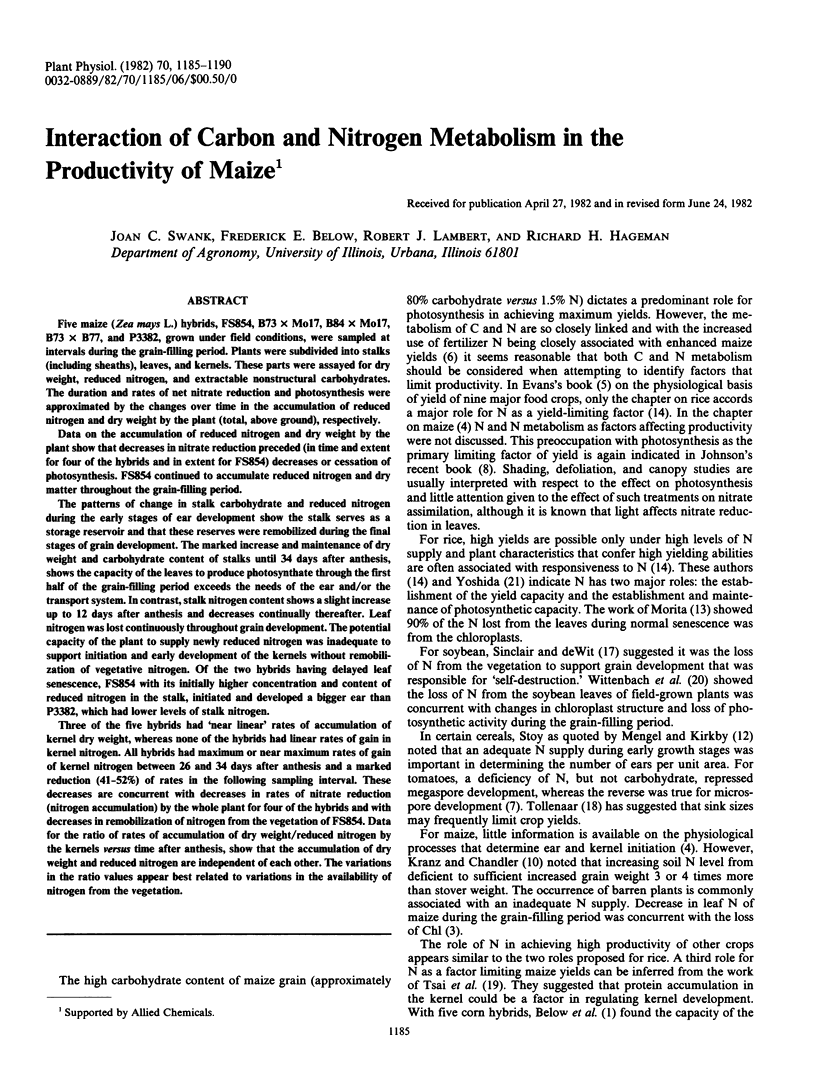
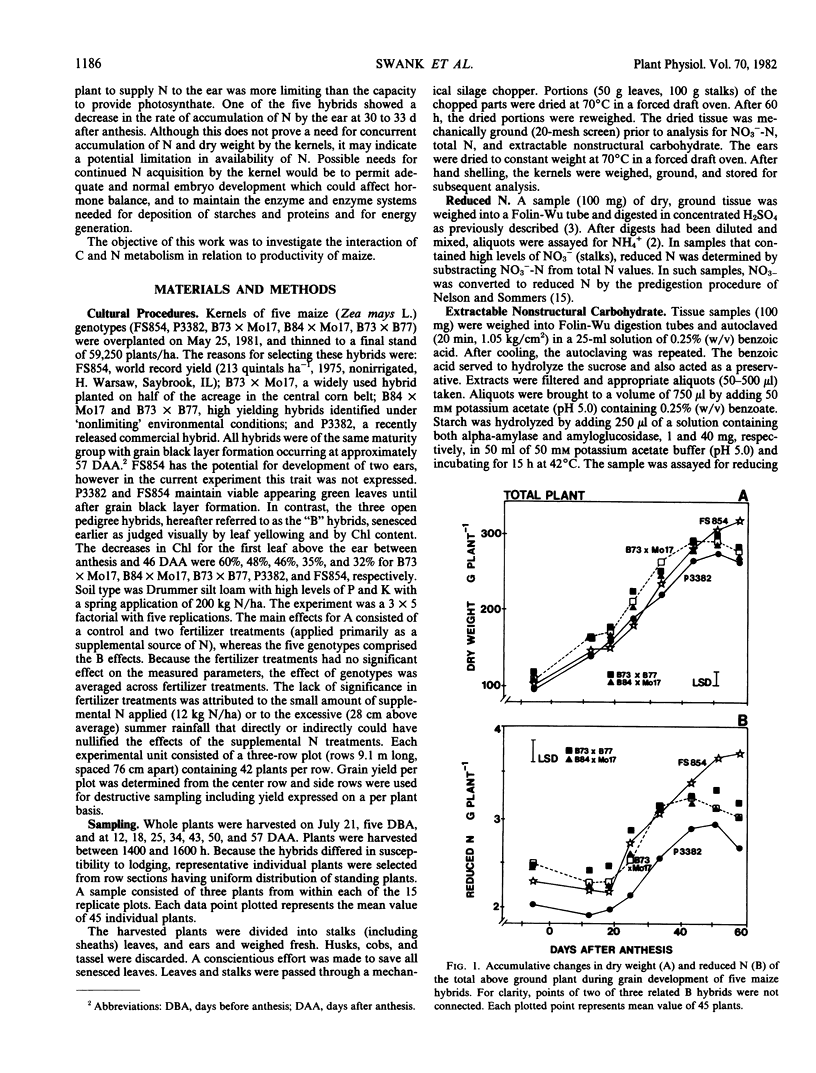
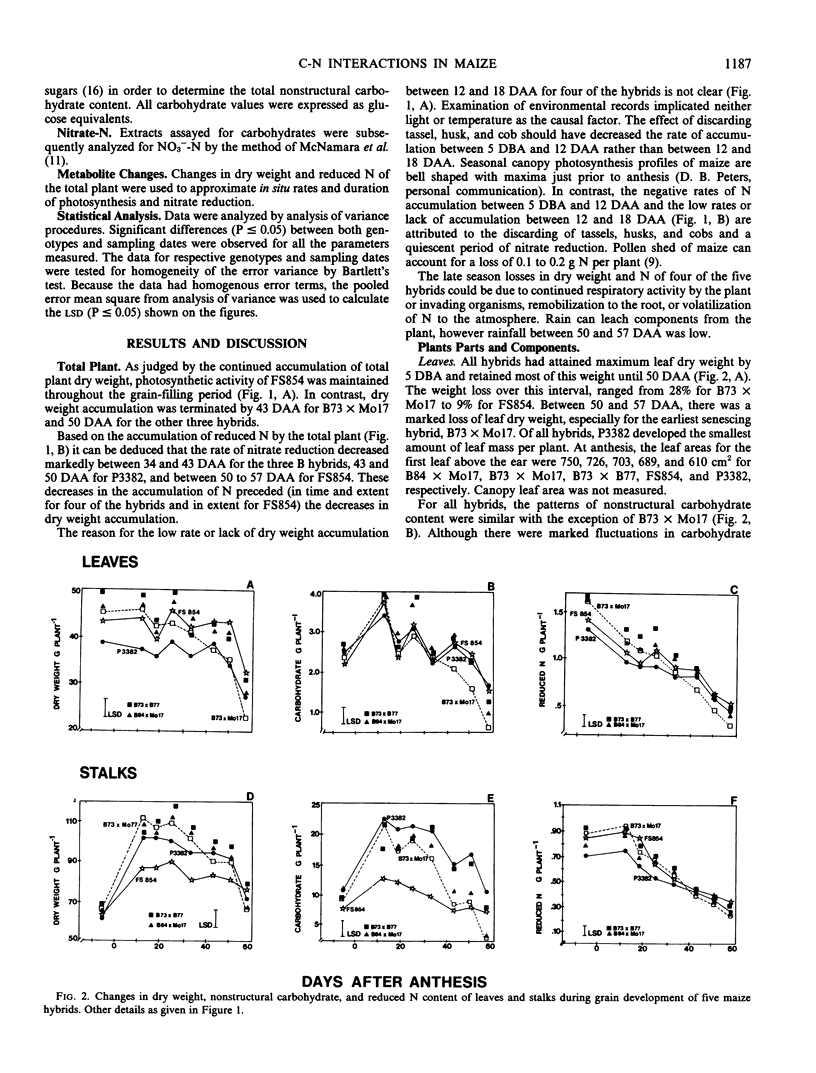
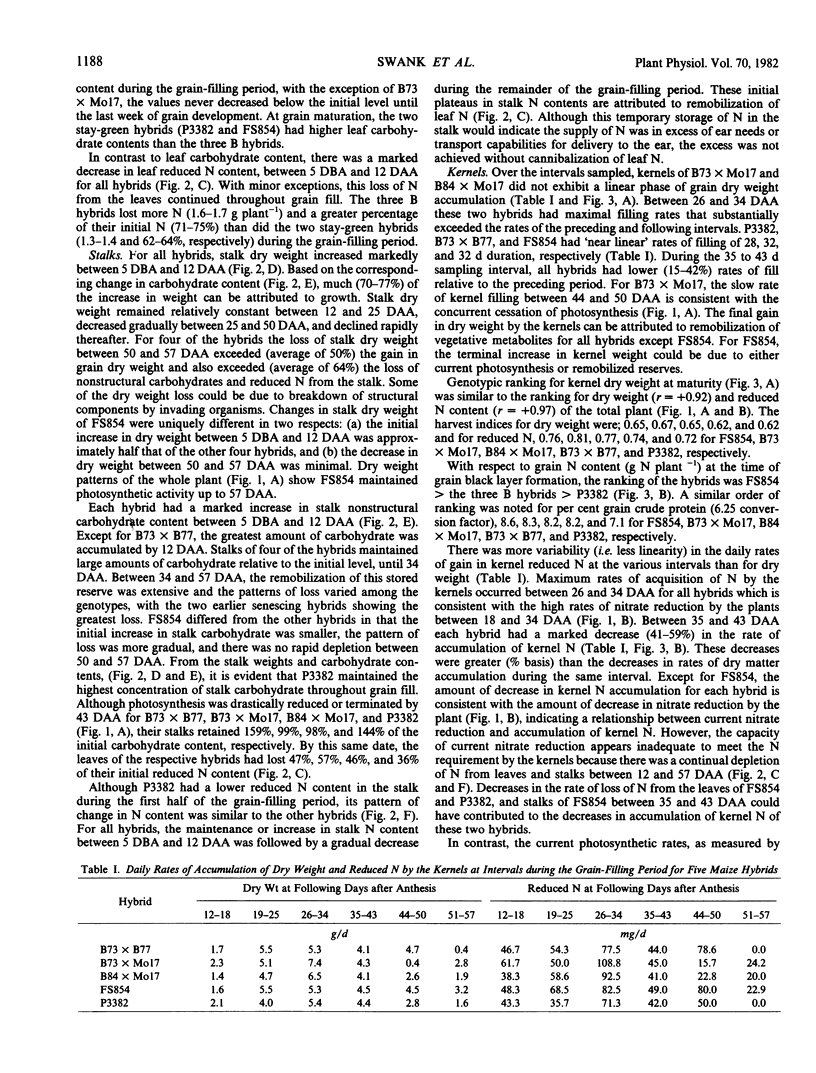
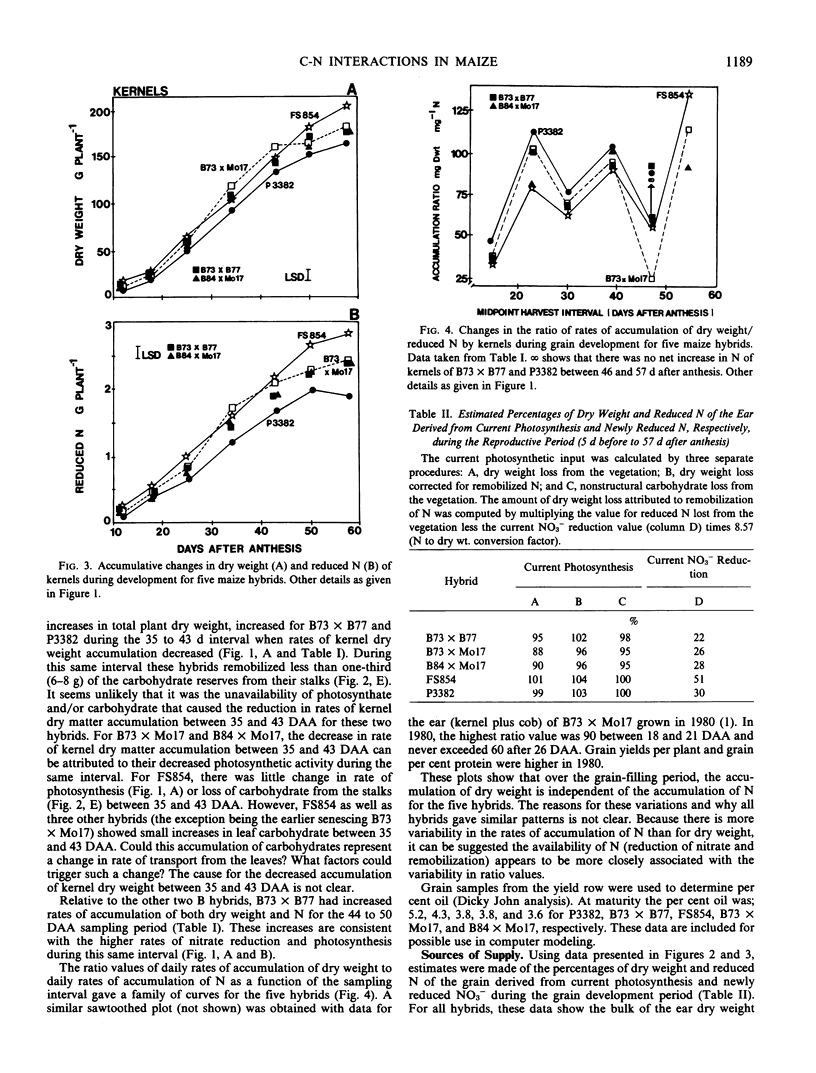
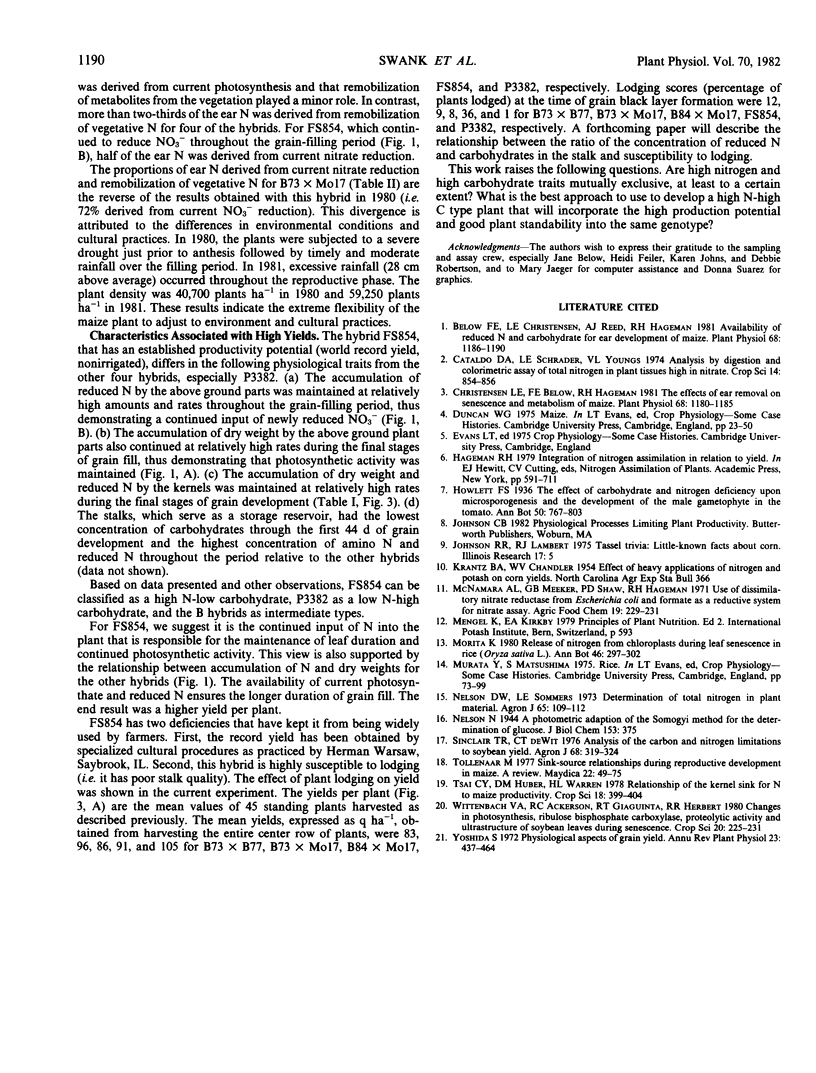
Selected References
These references are in PubMed. This may not be the complete list of references from this article.
- Below F. E., Christensen L. E., Reed A. J., Hageman R. H. Availability of reduced N and carbohydrates for ear development of maize. Plant Physiol. 1981 Nov;68(5):1186–1190. doi: 10.1104/pp.68.5.1186. [DOI] [PMC free article] [PubMed] [Google Scholar]
- Christensen L. E., Below F. E., Hageman R. H. The effects of ear removal on senescence and metabolism of maize. Plant Physiol. 1981 Nov;68(5):1180–1185. doi: 10.1104/pp.68.5.1180. [DOI] [PMC free article] [PubMed] [Google Scholar]


